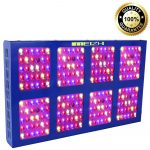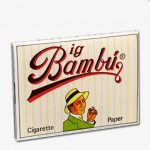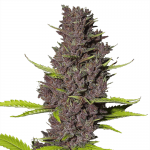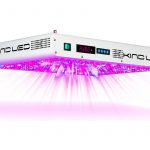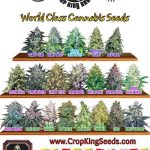Light burn or light stress is a common issue when using grow lights to grow your cannabis. Even with the fear of light burn, you cannot grow the crops without light because they use light for food, energy, and development.
However, if you go overboard with the lighting systems, your crops will suffer the consequences of light burn or light stress. The problem mostly occurs when the light proximity to the plants is short or not large enough. How do you detect cannabis light burn, and how do you treat it? Read on to find out.
What Is Cannabis Light Burn?
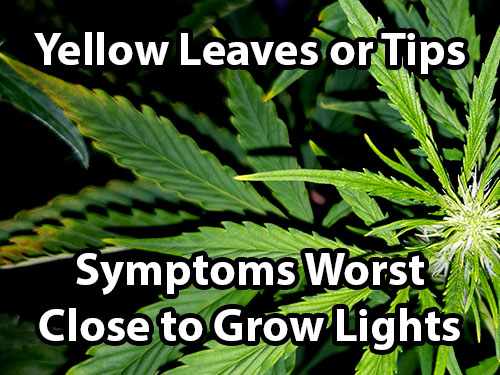
Light burn or light bleaching occurs when the plant canopies get too close to the grow lights. The leaves take a bleached or white look instead of the usual green color. Light burn mostly occurs to plants growing indoors than they do to those growing outdoors. The sun is too far away from outdoor cannabis plants to cause light.
Cannabis is also a resilient plant that has, in the years, learned to adjust to the natural sunlight, preventing light stress. When you hang grow lights too close to the plants indoors, the plants become overwhelmed and lack the strength to fight the power from the lights.
Too much light destroys the buds, making the resin containing cannabinoids useless for recreational and medicinal purposes. Everything about the buds, including taste and fragrance, also deteriorates due to light stress.
Read also: The Common Causes of the Yellowing of Marijuana Leaves
Cannabis Light Burn Symptoms
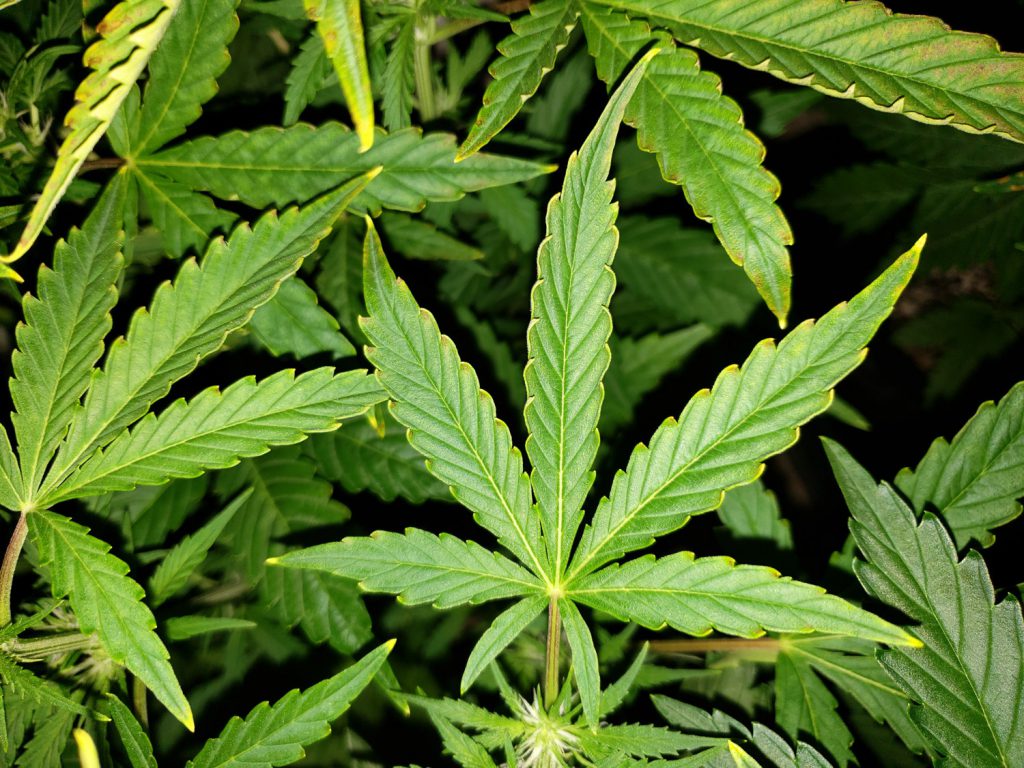
One of the most noticeable signs of light burn on cannabis plants is the yellowing of the leaves. Some people confuse light burn with nitrogen toxicity because they display the same kind of symptoms.
However, plats suffering from nitrogen deficiency have their leaves start the yellowing process from the bottom to the top, while the opposite happens for leaves exposed to too much light. Nitrogen deficiency also leads to leaves falling off the plant with little effort.
On the other hand, light burn leaves are hard to pluck off the plant and feel crispy to the touch. Besides the crispiness and the yellowing, leaves also turn brown, which indicates too much light and heat exposure.
How To Prevent Light Burn On Cannabis Plants
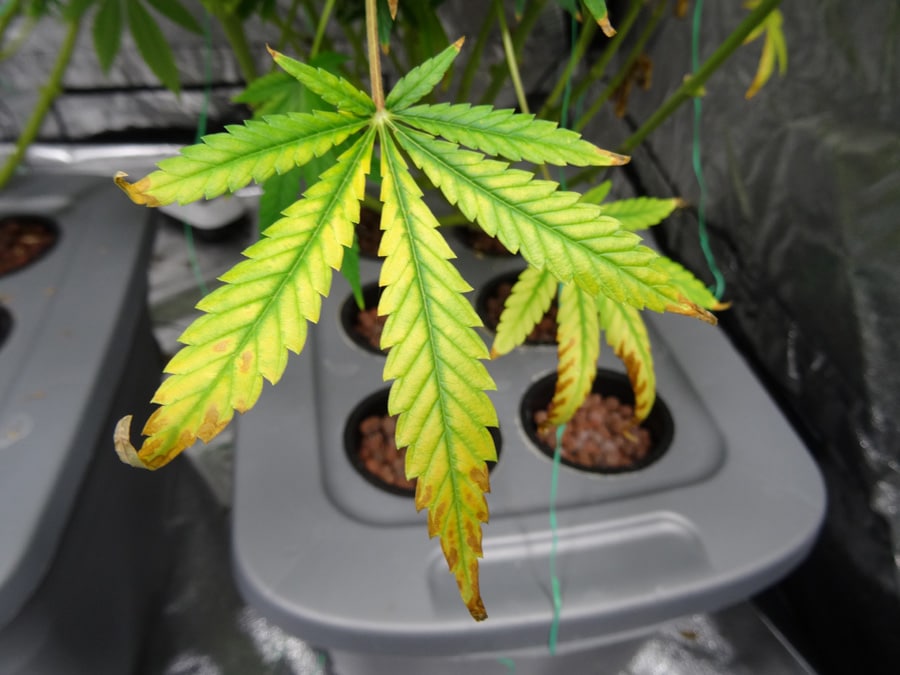
Preventing light burns on cannabis plants is much easier than curing the problem. The main causes of light burn are the short distance between the plants and the lighting system and the grow light intensity. The light density also depends on the grow light you use in the grow room.
If you are using CFLs and T5s that are 10 inches away from the plant canopy, you should not expect any light stress because they do not emit lots of heat. However, if you position LED grow lights or HID lights 10 inches away from the plant canopy, you can expect light burn to affect the plants.
If you cannot move the lights much higher away from your cannabis plants, the only other option would be to increase the distance by bending the plants. Another option is to cut the crop tops to reduce their growth, which you can only do when the cannabis plants are still in their vegetative stage.
One of the reasons why many cannabis growers prefer to use LED grow lights is that many of them come with control options that allow you to dim the lights to prevent overheating. The lights also come with options that turn the lights on at intervals. Even when using LED grow lights, you should determine the wattage you need for the plants.
If you choose to use a 50-watt LED grow light, the light intensity will not harm your plants much. However, using a 1000-watt LED grow light may lead to harmful consequences if the light is too near to the plant canopies. When using HID lights, you need to be extra careful because they are still too powerful even when they come with low wattage.
Besides the light intensity, HID lights also emit too much heat that plants cannot bear. Even with this knowledge, you still need to hang your grow lights at distances to provide enough light for the crops to make energy and get enough food for proper development.
The following LED grow light grow chart may help in determining the correct balance between light and plant.
Some of best 1000w led grow lights you can buy:
[amazon bestseller=”1000w led grow lights”]| LED lights (Wattage) | Closest in inches | Farthest in inches |
| 150 | 15 | 25 |
| 300 | 16 | 27 |
| 600 | 18 | 29 |
| 1200 | 22 | 31 |
| 2000 | 26 | 33 |
If you are not sure of the distance to maintain between the plant canopies and the light, you should read the manufacturer’s instructions that come with the LED grow light. Today LED grow lights also come in the form of much stronger COB LEDs. During the vegetative phase, you should place the plants further away if you are using COB LEDs.
If you notice your cannabis plants struggling and showing signs of stress, you should take that as a sign to push the lights further away. However, if the plants start going limp and stretching to find light, you should bring the lights closer to the plants. Again, COB LEDs come with the manufacturer’s instructions, so it is wise to be keen before installing them.
If you try everything and the plants still show no signs of recuperating, remove some lights. It would be best to keep in mind that using LED grow lights with the wattage of 40 to 70/Sq. Ft is enough to provide the plants with ample light. Anything higher than 70 watts may be too much for the plants. If your grow room does not have enough light adjustment space, train the plants using Low-Stress Training.
Low-Stress Training requires bending the stems of the cannabis plant to the side of the growing container to penetrate light into the plant canopies. Bending the stems helps reduce the plants’ height, thus bringing down the distance between the plant canopy and the light. However, plants may try to defy the bending and try to rise up to get as much light as they can.
In this case, you will need to hold the stems down with strong wires cable tires, taking care not to hurt the plants. Low Stress Training also works well during the auto flowering phase, but to be cautious, use it only during the vegetative state. The reason to use LST during the vegetative stage is to prevent causing stress to the plants during the flowering phase, which is the most critical stage in the cannabis life cycle.
[amazon bestseller=”cob led grow light”]If you are using MH and HPS grow lights, follow the distance levels on the chart below to help you determine the proper distance to maintain.
| HPS and MH Lights (Wattage) | Closest in inches | Farthest in inches |
| 150 | 8 | 12 |
| 250 | 10 | 14 |
| 400 | 12 | 19 |
| 600 | 14 | 25 |
| 1000 | 16 | 31 |
| 1200 | 18 | 33 |
Another way of preventing light burn is by maintaining the ideal temperature in the grow room. You can do this by using cooling fans to balance the heat effects emitted by the grow lights.
Ensure that temperature reduction is gradual in the grow room to allow the plants with stress-free adjustment to the new temperature conditions. Once you have the right temperature, try to keep it consistent by regular monitoring.
Can You Cure Light Burn?
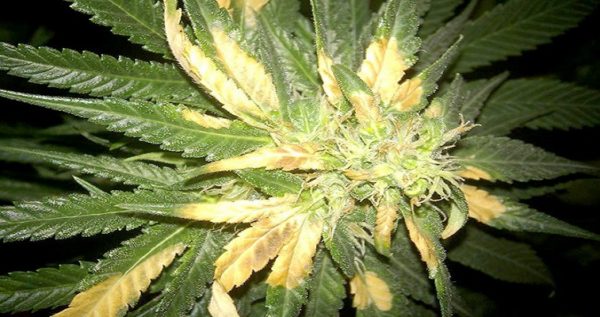
Curing cannabis light burn is not as easy as preventing the menace, especially if the leaves turn a complete white. If the leaves and buds have extreme burns, it may be almost impossible to save them.
If the leaves and buds crumple from being too crispy, it is also hard to save your cannabis. However, if you notice the white early enough, you can save the situation by increasing the distance between plants and lights.
You can also water the cannabis plants to restore moisture lost. Installing cooling fans is also another way of trying to cure the situation caused by the light burn. If the bleaching on the buds is not too intense, you can wait until the harvest.
You can also pluck off the leaves turning white from the plant to prevent them from further stressing the plant. When the plants are still young during the vegetative phase, you can cut off their tops once you start noticing any signs of light stress.
The top trimming method, known as topping and firming, reduces light and plant distance considerably. You also need to bear in mind that the tops do not stay down for long, and they grow back. In this case, you will need to combine topping, firming, and Low-Stress Training that ensures the plants are not close to the grow lights.
Light Stress Vs. Heat Stress
New cannabis growers find it hard to differentiate between light burn and heat stress. The reason for this is that light burn, in most cases, appears alongside heat stress. Besides producing light, grow lights also give off heat, which may cause harm to the plants.
Plants that are too close to the light source also incur as much light exposure as they do heat stress. What this means is that the plants have a mixture of both heat stress and light stress conditions. The symptoms for both heat and light stress show discolored leaves, wilting leaves, and eventual dying of the leaves.
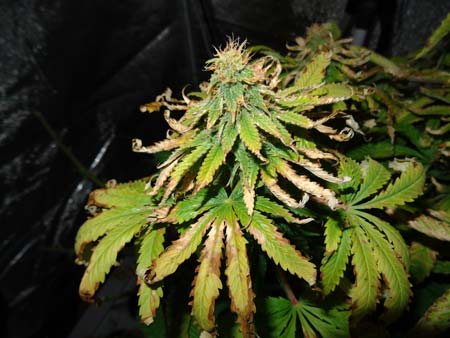
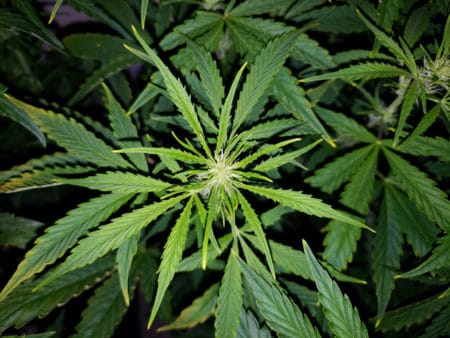
Indoor cannabis growers that use grow lights to grow crops can use a trick to check how much heat is too much for the plants under a grow light. The best testing method is to place a hand under the grow light, ensuring that the height is the same as that of the crops. If the warmth from the heat emitted by the grow light feels comfortable on the hand, it means that your plants are safe from the heat.
Preventing Heat Burn on Your Outdoor Cannabis Plants
Even though cannabis growing outdoors is less likely to suffer from the light burn, even under the most intense and direct sunlight, there are some exceptions. One such exception is transferring cannabis plants from indoors to outdoors.
It takes time for indoor crops to adjust to the outdoors environment. If you want to avoid light burn, do not move your indoor crops directly below intense sunlight. Instead, it would be best to place them in shaded locations outdoors until they adjust to the bright new environment. After a while, you can place the plants in a place with more sunshine.
Read also: The Causes of Cannabis Leaves Curling Down
Wrapping It Up
Even as you try to maintain the correct light distances between the grow lights and the plants, you should also consider the watering and nutrient requirements of your cannabis. The more light you use in the grow room, the more the crops grow and the more nutrients and water they need.
Feeding the crops with the right amounts of water and nutrient will reduce light burn. Do not forget to check the temperature levels, too, because high temperatures play a huge role contributing to light burn.


